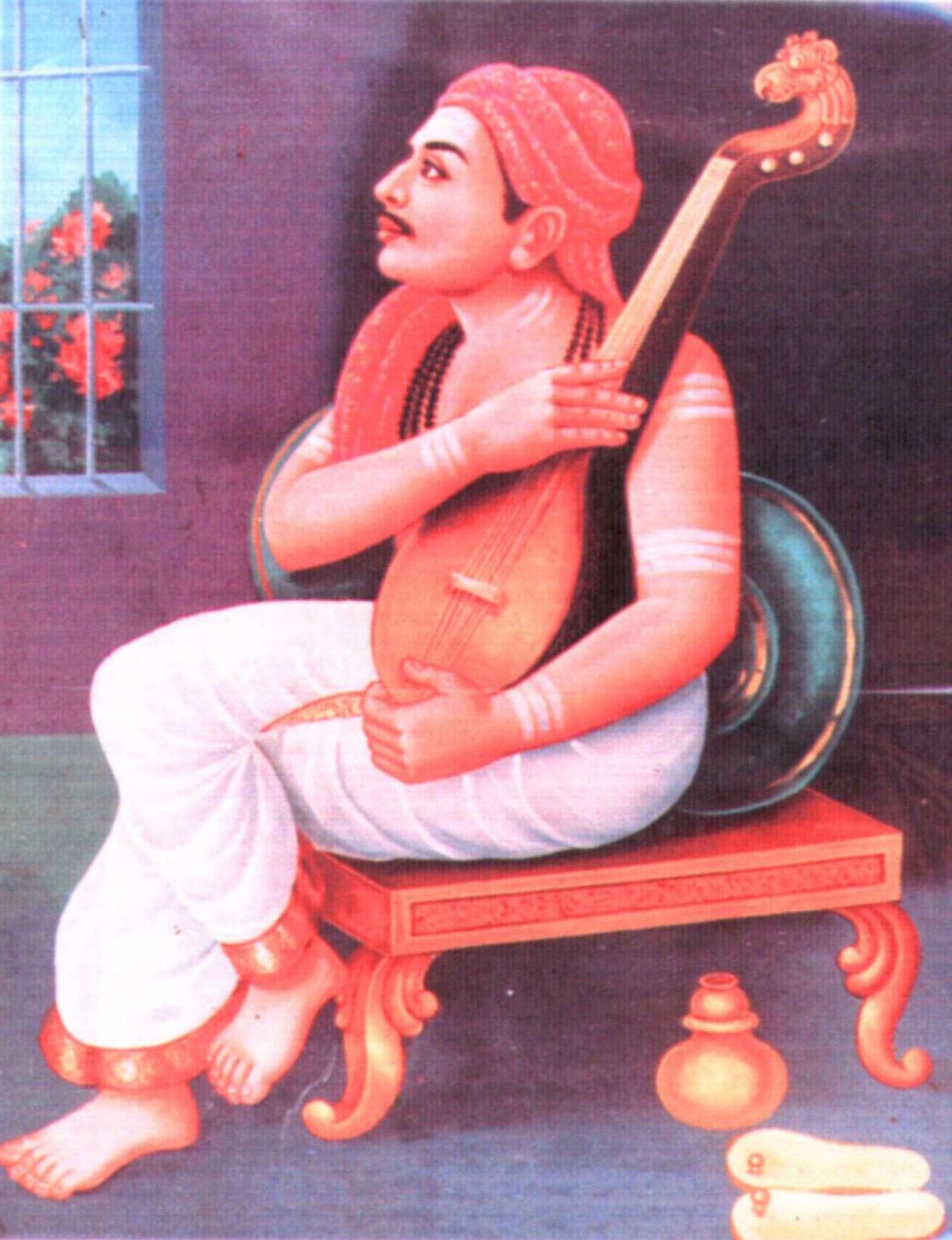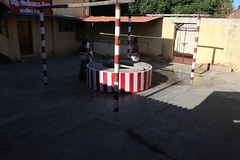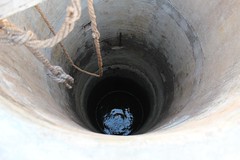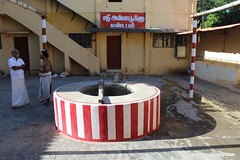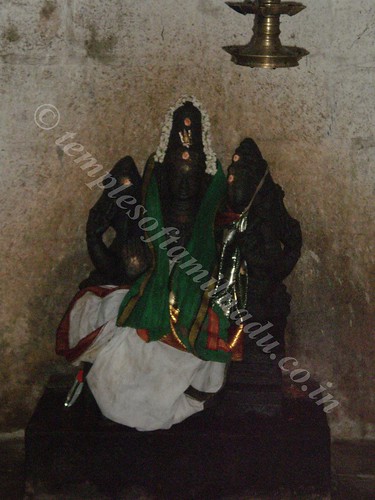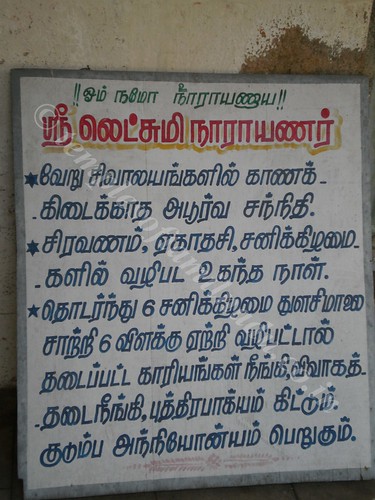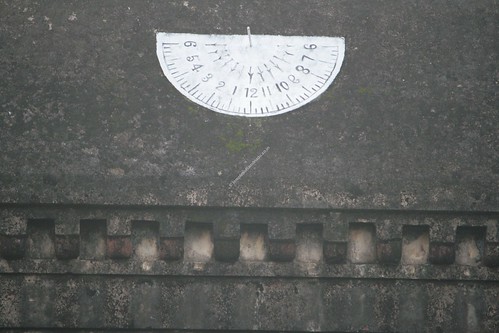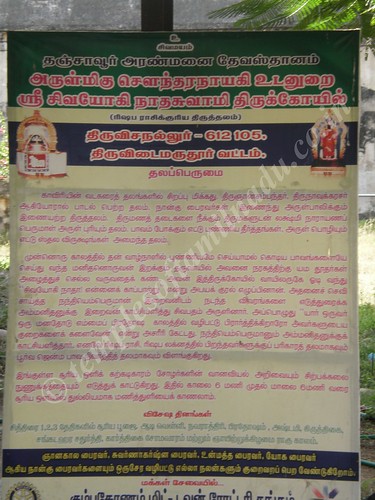SRI BAGAVAN
NAAMA BODHENDHRA SARASWATHIKI !! JAI !!!
Sri Sadguru Swamigal
Next comes the great saint and bagavathar who found out the samadhi of bothendra swamigal and made it popular. Sri Venkatramana Desikar, popularly known as Sri Maruthanallur Sadguru
Swamigal, was born in the year 1777 at Thiruvisanallur. He lived in
Maruthanallur Village, near Kumbakonam of Tamil Nadu. Sri. Sadguru
swamigal is to be remembered ever as he was the one who took pains to
formulate the ‘Sampradhaya Bhajan’ and popularise the same in the
interest of human society.
He traveled the length and breadth of our country in order to collect
the compilations of many saints and devotees and made existing
smapradhaya bhajan
.
Saraboji Maharaja was a disciple of him. Sri. Swamigal found out the
‘jeeva samadhi’ of Sri.Bhodendra Swamigal in a river at Govindapuram. On
his request King Saraboji, diverted the river and developed
Sri.Bhodendra Swamigal’s Jeeva Samathi.
He lead his life as a parama bhagavatha. He made ‘Rama Nama’
mantropadesam to Sri. Tyagaraja Swamigal of Tiruvyaru. He practiced
unchavirthi dharma daily. He attained muthi in the year 1817.
A Bhajan or kirtan is a Hindu devotional song, often of ancient origin. Great importance is attributed to the singing of bhajans with Bhakti, i.e. loving devotion. "Rasanam Lakshanam Bhajanam" means the act by which we feel closer to either our true self (see jiva, atman), or to God (see Brahman & Ishvara). Acts which are performed for the purpose of pleasing God are also sometimes called bhajan.
Sri Maruthanallur Satguru Swamigal is the one who has given us the Basic Bhajana Sampradaaya Paddhathi, though added and developed by the later
Bhagavathaas as said above. Even today, there is his Mattam in
Maruthanallur Village, which is administered by his lineage, who are
spreading the fame of Satguru Swamigal.
As there are Trinities in Carnatic Music (Thyaagaraaja Swamigal,
Muthuswami Deekshithar & Shyama Sasthrigal), so also in Dakshina
Bhajan Sampradaayam field, there are three Gurus (Govindapuram Bodhendra
Swamigal, Thiruvisanallur Shridhara Venkateswara Iyyavaal and
Marudaanallur Sadguru Swamigal), who have prescribed Naama Japam and
Bhajan as the only source for Mukthi in Kaliyuga. They knew that in
Kaliyuga people will not be able to engage themselves in Dhyana, Yaaga,
Yajna, Tapas, Pooja etc. etc. as done in Krita, Thretha and Dwapara
Yugaas, which are too time consuming and needs more spending. They have
evolved a method which is so easy to follow and is definite in results.
Marudaanallur Sri Sadguru Swamigal, born to Venkata- subramania
dampathis after about 100 years of Bodhendra Swamigal's Samaadhi and
originally named as Venkata- ramana, was said to be the re-incarnation
of Sri Raama. He was duly initiated into Brahmacharya and Gruhastha
Ashramaas, being married to Janaki.
Sadguru Swamigal was engaged in Bhakthi Maarga by singing the names of
God. He was the one who identified the Samaadhisthal of Bhagavan Naama
Bodhendra Swamigal in the Cauveri river bed in Govindhapuram
(Kumbakonam), which was earlier washed away by flood waters and people
did not care for it. Ordained by fate, he decided to discover the
Samaadhi by tying his legs (nay he may stamp on the samaadhi) and
rolling on the river bed. He heard the chanting of "Raama Raama" at one
particular location and decided that it should be the samaadhisthal of
Sri Bodhendraal, which he wished to re-build surrounded by a beautiful
Brindaavan. However, Sadguru Swamigal, being a gruhastha with no
financial backing, approached the then Maratta King Sri Sarabhoji
Mahaaraja (the ardent disciple of Samartha Raamadaas - a Raama Bhaktha),
who financed the project of diverting the flow of the river a little
away and to build an Adhishtaanam at the spot where he Samaadhi was
found.
Sadguru Swamigal followed the Bhagavatha Dharmaanushtanam
meticulously and travelled throughout India and observed and collected
the songs composed and sung regularly by various Bhakthaas/Sants in
their own languages such as Hindi, Maratti, Thelugu, Kannada,
Tamizh,Malayalam and Sanskrit, the Saptha Bhaasha. The Bhakthaas who
have rendered/sung songs/slokaas can be classified as: Thukkaraam,
Naamdev, Gorakkumbha, Santh Gnaneswar, Gnaanaabai, etc. in Maharashtra;
Purandaradas, Kanakadas etc. in Karnataka; Meerabai in Rajasthan;
Kabirdas, Thulsidas etc.in Uttar Pradesh; Jayadevar in Orissa,
Chaithanya Mahaa Prabhu in Bengal; Raamadas, Annamaacharyar, Narayana
Theerthar etc. in Andhra; Sri Narsi Mehta in Gujarath; Aazhvaargal,
Naayanmaargal, Bondhendraal, Sridhara Ayyavaal,Sadhasiva Brahmendral,
Thyaagaraaja, Gopalakrishna Bharathi etc.in Thamil Naadu, and many
others.
He felt that to involve people in Bhakthi Marga, there must be unity and
he compiled the songs sung by the above Bhakthaas in various languages,
codified them into a Paddhathi and made it his daily routine. What a
herculean task! This brings out the theory of Unity in Diversity. What a
best method of National Integration. Marudaaanallur Sadguru Swaamigal
was the one who provided us the basic Dakshina Sampradaaya Bhajan
paddhathi by incorporating songs in different languages, which came to
stay as the basic Paddhathi Krama that are in use today.The Sampradaayam
prescribed by Sadguru Swaamigal is found in original Ola Chuvadi in the
Mattam and at Bodhendral Mattam and about 60 years ago it was publshed
in Grandhaksharam by Thillai Sthanam Narasimha Bhagavathar under the
title : BHAJANOTHSAVA PADDHATHI. Later, in Chennai Sri Kothandarama
Swamigal published an elaborate Paddhathi in Thelugu. Again, Thiruvayaar
Nagaraja Bhagavathar brought out a short publication of this in Thamizh
for the first time. Later Udumalaipettai Ramakrishna Bhagavathar has
brought out a somewhat elaborate Paddhathi in Thamizh, which used to be
followed widely all over India
BHAJAN is
derived from the word "BHAJANAM", meaning "concentrate on Naama or Roopa
of God". Roopa Bhajanam requires one to sit and meditate for a long
time on a figure of Ishtadaivam. This is little hard to practice, as
some rules have to be followed for good results. Naama Bhajanam is
repeating the name of Ishtadaivam. This is very simple and can be done
throught the day and night without any effort or rules. Added to it, if
the Naama is uttered with Music (Sruti, Raaga and Thaala), it gives a
soothing effect and takes the mind to "layam". It, therefore, makes it
easy to get one pointed attention and at the same time, it is more
pleasant to the ears of the audience, who are also attracted towards
this process. It becomes a collective effort (group prayer) which is
more effective. Hence, singing in praise of God is the way of life one
should adopt in Kaliyuga. It is simple to follow. This should be done
with concentration, Bhakthi/Devotion and with one pointed attention.
Types of Bhajans
A look into the past reveals that bhajans as a genre have come a long
way; weaving a home for themselves into the core of human hearts.
Traditions of bhajan singing, such as Nirguni, Gorakhanathi,
Vallabhapanthi, Ashtachhap and Madhura-bhakti, have been formed over the
ages. Each sect has their own sets of bhajans and methods of singing.
The traditional form of bhajan in south india is known as Sampradya Bhajans.
Sampradaya Bhajana or Dakhshina Bharatha Sampradaya Bhajana is the
tradition of Bhajans in India and as the name suggests particularly in
South India. It's the collection of Kirtanas and Namavalis in specific
order. Mainly the order has been evolved by Sri Marudhanallur Sadguru
Swamigal, Sri Pudukottai Gopala Krishna Bhagavathar.
The bhajans are typically rendered in the following order:
Panchapati (Five songs in
Telugu (Bhadrachala Ramadas), Kannada (Sri Purandara dasa), Sanskrit
(Sri Sadasiva Brahmendral), Tamil (Sri Gopalakrishna Bharati) and
compositions of Sri Tyagaraja, Kabir Das, Meera Bai, Tulsi das or Surdas Marathi Abhangs on Lord Panduranga
Now comes the turn of Dyana keertanais (hymns on Gods)
1. Vinayaka
2. Saraswati
3. Murugan
4. Shiva
5. Ambika
6. Nrusimha
7. Ram
8. Krishna
9. Vishnu or Dashavatara stuti
10. Venkatesha
11. Vittal or Pandurang (Abhangs)
12. Lakshmi
13. Sita or Radha
14. Anjaneya
15. Garuda
16. Aiyappan
17. Nandikeshwaran
18. Chandeeswaran
19. Chaitanya Mahaprabhu
20. Sri Gopalakrishna Bhagavatar (or Guru Keertanai)
Then comes Pooja Sampradaya Kritis
1. Baro murare (welcome)
2. Sharanagata vatsala (request)
3. Kastoori gana.. (pooja)
4. Chita juni... (aarati)
5. Shobane
6. Jay Jay aarati...
7. kanjadalakshiki..
8. Prartana Abhang
9. Rajadi rajaya.. (pushpanjali)
10. Kattiya vachanam (verses from variety of books)
11. Chatur veda parayan
12. Kshetra mahatmiyam (verses on importance of tirta kshetras)
13. Upacharamu.. (upachara sankeertan)
14. Vinnappa gadyam (praying to God - shlokas)
15. Sri Krishna Govinda hare murare.. (naamaavali)
Pooja ends here and Divya
namam starts.. (deepa pradakshinam - With lighted lamp in the middle
considering the lamp as God, bhagavatas will do sankeertan by doing
pradakshinas) This equals going around the earth.
Then comes dolotsavam (making God sleep), Anjaneya Keerthanai and Mangalam.
Sri Sridhara Ayyaval mutt at Thiruvisainallur
śrīkaṇṭhamiva bhāsvantaṁ śivanāmaparāyaṇam|
śrīdharaṁ veṅkaṭeśāryaṁ śreyase gurumāśraye ||
Ayyaval as he is respectively called is contemprary of bothendra sarawathi swamigal. Sridhara Venkatesa Dikshitar (1635–1720), popularly known as Ayyaval, was a Hindu saint and composer who lived in the village of Thiruvisanallur in the then Thanjavur Maratha kingdom.
Ancestry and early life
Very little is known about Ayyaval's ancestry or early life.
According to some accounts, Ayyaval was the son of one Sridhara
Lingarayar, a Brahmin who settled in Thiruvisanallur, during the reign of Shahuji I. Some accounts mention that Ayyaval's father was the Diwan of the Mysore kingdom. When Ayyaval, a staunch devotee of the Hindu god Shiva, was offered the post of Diwan upon his father's death, he rejected the offer and instead, chose to become a sanyasi or Hindu monk and embarked on a pilgrimage of the Saivite temples of the Cauvery Delta region.
Events
On Ayyaval's arrival in Thanjavur, he was offered all assistance and respect by Shahuji, the then ruler of the Thanjavur Maratha kingdom.
Shortly afterwards, he restored a Brahmin dead of snakebite to life and
thus acquired a reputation as a miracle-worker. He was attracted to the
Mahalingeswarar shrine at Thiruvidaimarudur and set up his house at the neighbouring village of Thiruvisainallur.
Various events are associated with the life of Sridhara Ayyaval.
Chastised for feeding a hungry Dalit by orthodox Brahmins who insisted
that Ayyaval should bath in holy Ganges and thus purify himself, Ayyaval
prayed to Shiva and recited the Gangashtakam sloka appealing to the goddess Ganges. According to the traditions of the Sri Sridhara Ayyaval Mutt, when Ayyaval had finished reciting the Gangashtakam, water from the holy Ganges river flowed out of the well in his house.
Ayyaval outlived his wife and most of his contemporaries. He is
believed to have died in 1720 at the age of 85. According to most
accounts, he disappeared mysteriously while on a visit to the
Mahalingeswarar Temple. Ayyaval's followers believe that on entering the
temple, Ayyaval's soul entered the idol of the presiding deity,
Mahalingeswarar, and became one with him.
Sridhara Ayyaval was a contemporary of Sri Bodhendra Saraswathi and Sadasiva Brahmendra. Sadashiva Brahmendra's song Tunga Tarange Gange was written on Ayyaval who brought the Ganges.
He also holds an important status in Dakshina Sampradaya
Namasankirthanam and is a member of the
"trinity". Several songs have
been written and composed on him and are always sung in any proper
Namasankirthanam. The krithis are almost always followed by the namavali
"Gangadhara Gangadhara", referring to Ayyaval as the bearer and bringer
of the Ganges
Sri Shridhara Ayyaval was an embodiment of humility. For the sake of
uplifting man he composed many works. Bhagavan Nama Bhooshanam, Aakya
Shashti, Dayashatakam, Stuti Paddhathi, Shiva Bhakti Kalpalatha, Shiva
Bhakta Lakshanam, Achyutaashtakam, Dola Navaratna Malika etc. are a few
to name. Though titled differently, all these works were primarily about
the greatness and glory of the Divine Names of the Lord.
Sri Bhagavan Nama Bodendra Swamigal was a contemporary of Sri Shridhara
Ayyaval. Sri Bodendra Swamigal had deep reverence for Sri Shridhara
Ayyaval. They used to meet often and enjoy the bliss of talking about
the glory of the Lord. Though Sri Shridhara Ayyaval saw no difference in
the prowess of Lord Shiva's name and Lord Vishnu's name he loved
chanting the names of Lord Shiva. Similarly, Sri Bodendra loved the name
of Rama more than anything. When Sri Bodendra Swamigal read the work of
Sri Shridhara Ayyaval named 'Aakya Shashti', which primarily talked
only about the greatness of Lord Shiva's names in sixty verses, he said,
"You could have named this work as 'Shivaakyashashti' instead of 'Aakya
Shashti'! Though all the names of the Lord are equally sweet and
powerful, you have chosen to sing the greatness of only one of them! Why
is it so? Don't you like singing the divine Name of Lord Rama?" The
moment Sri Shridhara Ayyaval heard this from the great saint, he replied
in a beautiful verse emphasizing the greatness of the Divine Name of
Lord Rama. "While Lord Shiva, the glory of whose name I have sung in
these sixty verses, himself does not cease to chant the Divine Name Rama
even for a moment out of such taste and love for that name, how can I
dare to describe the beauty and glory of the Divine Name of Rama?"
Sri Bodendra Swamigal shed tears of joy hearing this verse.
Sri Bodendra Swamigal and Sri Shridhara Ayyaval spent many such
wonderful moments of divine bliss. Sri Sadashiva Brahmendra, another
great Saint of the same time, also used to join Sri Shridhara Ayyaval
and Sri Bodendra Swamigal in their discussions.
A few learned scholars of the city envied Sri Shridhara Ayyaval for the
place he had found in the heart of the king. Once, they had arranged for
the celebration of Janmashtami festival with much pomp and show. Sri
Shridhara Ayyaval did not relish the worship that was devoid of
devotion. Therefore, he did not participate in the function. The people
who conducted the function carried a picture of Lord Krishna in
procession. When Lord Krishna's procession came to the door of Sri
Shridhara Ayyaval, the priests and scholars refused to accept the
offerings of Sri Shridhara Ayyaval. Reprimanding Sri Shridhara Ayyaval
for not taking part in the festival because of pride, they said, "Why
feign devotion when you totally lack devotion?Keep away. Our Lord
Krishna hardly needs your worship."
Sri Shridhara Ayyaval smilingly replied,
"Lord Krishna knows who His devotees are!" Cut to quick by these
words, the priests and scholars said, "Well! In that case, why don't you
call Lord Krishna? If you are indeed a great devotee, let us see if
Lord Krishna accepts your invitation!"
Without a moment's hesitation, Sri Shridhara Ayyaval composed and
sweetly sang the names of Lord Krishna in a beautiful verse. While Sri
Shridhara Ayyaval stood on, the priests ordered the procession to move
on. Sri Shridhara Ayyaval too went inside his humble home.
When the procession reached the next house, the priests and scholars
found the image of Lord Krishna missing in the photograph! Trembling
with fear, they ran to the house of Sri Shridhara Ayyaval to beg his
pardon. Sri Shridhara Ayyaval was putting Lord Krishna to sleep. He
composed the 'Dola Navaratna Maalika' on Lord Krishna that night. The
priests and scholars who had offended Sri Shridhara Ayyaval, out of
ignorance, now understood the glory of Sri Shridhara Ayyaval and his
steadfast devotion and love for the Lord. To absolve themselves of the
sin incurred by offending a great devotee and with a hope to develop the
kind of love for the Lord which Sri Shridhara Ayyaval had they too
spent the entire night with Sri Shridhara Ayyaval, singing the Divine
Names of the Lord.
Sri Shridhara Ayyaval used to visit the Temple of MahaLinga, Lord Shiva,
in the nearby city of Madhyarjuna. Rain or shine, he would not miss
visiting the temple. He preferred to see the Lord when there was not
much crowd and so chose the early hours of the morning for the visit.
Once, Lord Shiva intended to test the love and devotion of Sri Shridhara
Ayyaval. That day, Sri Shridhara Ayyaval was on his way to the temple
as usual. He had to cross the river Kaveri in order to reach the temple.
On reaching the banks of Kaveri he found the river flooded. Boatmen
refused to ferry the boat across the river. Sri Shridhara Ayyaval could
not bring himself to return home without seeing His Lord in the temple.
Gazing at the tower of the temple on the other shore, Sri Shridhara
Ayyaval stood with tear-filled eyes. He felt he must have offended the
Lord in some way and that sin acted as a block to the darshan of His
Lord. He composed a soulful prayer called 'AarthiHara Stotra' in which
he prayed, "Oh Lord! Please bestow your loving and compassionate glance
on me, who is suffering from the pangs of separation from you! You have
the untarnished fame of relieving the one who merely chants your Divine
name from the clutches of sorrow! How is it that though I have sought
refuge in You, I am agonized? Did you not bestow your grace on the
hunter who, on death bed, chanted your divine name 'Hara Hara Hara'
unintentionally, while teaching his son the way to hunt-'Prahara,
Aahara, Samhara'(attack, bring, kill)? Such being your compassion, how
can you turn your face away from me who am piteously praying- 'Save me
Lord Shiva!'
While Sri Shridhara Ayyaval was lamenting thus a priest of the Shiva
Temple, who was known to him, came to him and gave Vibhoothi Prasada
(Sacred ashes). He said to Sri Shridhara Ayyaval, "I did not find you in
the temple today. Knowying that you would be saddened at not being able
to cross the river and have the vision of the Lord I decided to come
and give you the sacred ashes." Transported to Bliss Sri Shridhara
Ayyaval prostrated before the priest and accepted the sacred ashes with
reverence.
While Sri Shridhara Ayyaval moved towards his home, shedding tears of
joy thinking of the love of the Lord towards His devotees, the question
'how did the priest manage to cross the flooded river?' arose in him.
From his memory he recalled that the priest was not a bit wet and the
sacred ashes smeared on his body were not sumdged! Sri Shridhara Ayyaval
wondered if it was Lord Shiva himself who had come in the garb of the
priest. Next day, the flood subsided and Sri Shridhara Ayyaval went to
the temple and found the same priest there. Sri Shridhara Ayyaval
thanked the priest for his kindness and said that his mind was at peace
only after receiving the sacred ashes from him the previous day. The
priest was utterly confused hearing this. He said, "Sir! I never came to
the other shore! Indeed, who could have dared to cross the flooding
river?"
On hearing this, Sri Shridhara Ayyaval was moved beyond words. He
realized it was Lord Shiva himself who had taken pity on him and come to
give the sacred ashes. With a grateful heart he sang the glory of the
compassion of the Lord in the hymn 'Dayashatakam'. In this hymn, he
sings, "Oh! The Compassion of the Lord! One is cleansed of all his sins
the moment you cast your glance on him! When will you bless me so that I
will always be immersed in the bliss of chanting the Divine names like
'Madhava', 'Murari', 'Kaamaarey', 'Shiva', 'Mahadeva', 'Govinda' and
'Purahara'! Be pleased to bestow two boons on me! That my mind may
always be established in the Divine Form of Lord Shiva and that my
tongue may always chant the Divine Names! In my last breath, let me
chant the Divine Name 'Shiva'!"
Sri Shridhara Ayyaval, who composed 100 such verses glorifying the
compassion of the Lord, was none other than Lord Shiva himself! Needless
to say, he was an epitome of compassion! He could not bear to see
anyone suffer. He considered even liberation a trifling matter as
compared to compassion to all beings.
One day, Sri Shridhara Ayyaval was on his way to River Kaveri for a
bath. It was a day of 'Sraardha' (annual death rites for ancestors) in
his home and all food offerings were ready. On the way he found a poor
man belonging to a low caste fallen down in an unconscious state due to
hunger. Unable to bear the sight of the suffering of the poor man Sri
Shridhara Ayyaval rushed back to his home and returned with the food
prepared for the ceremony. He gave it to the man. Sri Shridhara Ayyaval ,
who saw the Lord in all, neither had a second thought about doing this
nor was he bothered about the sin he might incur. He knew that by
appeasing the hunger of this man he would be pleasing the Lord. After
giving him food Sri Shridhara Ayyaval went back home and cleaned the
entire place. He cooked fresh food for the priests and invited them for
performing the ceremony. The priest who were to perform the ceremony
were a jealous lot who envied Sri Shridhara Ayyaval and chose this as
the right moment to create trouble for him. They picked up an argument
with him on this matter. Sri Shridhara Ayyaval quoted scriptures to show
the greatness of timely help and said it was in no way sinful to feed a
hungry man. However, the priests were adamant and refused to accept any
explanation. They all walked out of the house and proclaimed Sri
Shridhara Ayyaval as an outcaste. Sri Shridhara Ayyaval accepted this
too as the divine will of Lord and continued the ceremony without the
help of the priests. The Trinity -- Lord Shiva, Lord Vishnu and Lord
Brahma -- themselves appeared at the home of Sri Shridhara Ayyaval and
participated in the ceremony! They partook of the food cooked by Sri
Shridhara Ayyaval with pleasure. What will the Lord not do for His
loving devotee?
Though the ceremony was performed
in this manner that year, the following year Sri Shridhara Ayyaval,
very compassionate, requested the priests to participate in the
ceremony. The arrogant priests refused the invitation bluntly. Sri
Shridhara Ayyaval pleaded with them to accept his invitation and said
that he would carry out any atonement that they prescribed for the sin
incurred. The priests then said, "Take a dip in the Holy Ganga. That is
the only atonement for the terrible sin incurred."
Sri Shridhara Ayyaval replied, "The Holy Ganga
is up in north and I am already old. I do not think I can travel that
far. Instead, I shall bring the Holy Ganga to me in the well here my
backyard."
Hearing
this, the priests said, "How preposterous of you to speak so! Of course,
there are some verses in the scriptures which exalt the Holy Name of
Ganga by saying that if one takes a dip in any water chanting the name
of Ganga, he would gain the merit of having taken a dip the Holy River
Ganga. But these are nothing but exaggerations! Just as you exaggerate
the glory of Divine Names!" and laughed out. "Don't even imagine that
you can trick us and become one among us again!"
Sri Shridhara Ayyaval humbly replied, "I do not intend to cheat
anybody. I shall bring the Holy Ganga right here." Saying this, he
prayed to Holy Ganga through eight verses of Gangashtakam composed by
him then. And lo! The Holy River Ganga gushed out of the well in the
backyard of Sri Shridhara Ayyaval's home! The priests were terrified to
witness this miracle. Now they were alarmed to see the river gush out to
the roads! They ran and fell at Sri Shridhara Ayyaval's feet and begged
his pardon. They requested Sri Shridhara Ayyaval to send the river
back! Sri Shridhara Ayyaval invited all of them to take a dip in the
river. The panicked mass insisted he send it back and refused to take a
dip. Sri Shridhara Ayyaval then prayed to Mother Ganga to stay in his
well in the backyard of his home for ever. The Holy River Ganga paid
heed to his prayer and subsided into the well. This incident occurred on
the new moon day in the month of 'Karthika'. Till this day, many
pilgrims travel to Tiruvisainallur to take a dip in this well every year
on the new moon day of the Karthika month.
Sri Shridhara Ayyaval joined Sri Bodendra Swamigal in spreading the
message of chanting the Divine Names as the easiest means to gain both
material and spiritual benefits. One day, while Sri Shridhara Ayyaval
was on his way to visit the temple of Lord Shiva he discoursed to his
devotees emphasizing the glory of divine names and love for the Lord.
Sri Shridhara Ayyaval looked unusually bright and lustrous that day. In
the sanctum sanctorum of the Lord, with tears in his eyes, he prayed to
the Lord through many verses. Overwhelmed by the pangs of separation
from the Lord and unable to stand it any longer, Sri Shridhara Ayyaval
rushed to the Sanctum of the Lord in order to embrace Him. While the
priests attempted to stop him Sri Shridhara Ayyaval ran and disappeared
into the Sanctum of the Lord. The Lord, in the form of Linga, shone
brightly like a sun for some time. The awestruck devotees stood looking
on, as this wonderful incident happened, and shed tears.
Sri Shridhara Ayyaval spent every moment of his life striving to uplift
the mass by spreading the nectarine Divine Names of the Lord. Let us all
pray to Sri Shridhara Ayyaval to bless us all with a taste for the
Divine Names of the Lord.
Every year on the New moon day of Karthigai month around 10,000 people
throng the madam and take a dip at the well. A grand annadhanam also
takes place. A grand 10 day utsav is also being celebrated preceding
that New moon day. It was fascinating to imagine for a moment how it
will look like when the Ganga flows out from the well through the
Agraharam and the whole village. Due to the presence of Ganga, the place
is considered like Kasi; the mandapam is called Viswanatha mandapam;
the dining hall is called Annapoorna hall etc.,
Ayyaval had
composed a number of works some of which are not yet been printed and some not available.
Some of his works are listed below.
(1) Bhagavannama Bhushanam.
(2) Akhyashashti.
(3) Daya satakam.
(4) Matrubhtasatakam.
(5) Stuti paddati.
(6) Shivabhakthikalpalatha.
(7) Shivabhaktha lakshanam.
(8) Taravali stotram.
(9) Artihara stotram.
(10) Kuliresvarashtakam.
(11) Jambhunathashtakam.
(12) Doshapariharashtakam.
(13) Krishnadwadasamanjari.
(14) Achyuthashtakam.
(15) Dola navarathnamala.
(16) Padamanimanjari - a sanskrit dictionary.
(17) Shahajiraja charitam
MUTT FRONT VIEW

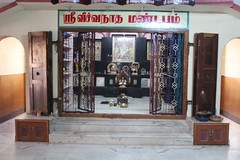
ANNADHANA MANDAPAM
There is a photo of four saints Sri Sridhara Ayyaval, Sri Bodhendral,
Sri Marudhanallur Swamigal and Sri Brahmmendhral on top of the
Viswanatha mandapam. All the great four lived in the same period and met
each other.
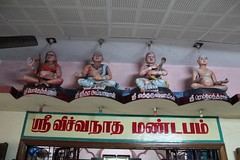
\
WELL WHERE HOLY GANGES COMES
THIRUVISAINALLUR IS ALSO FAMOUS FOR SIVAYOGINATHAR TEMPLE. LET US SEE SEE BREIFLY ABOUT THE HISTORY OF THE TEMPLE.
Yoganandeswarar Temple at
Thiruvisanallur is a very ancient temple. The presiding deity of this
temple, Yoganandeswarar is also known as Sivayoginathar. Eight Shiva
yogis after severe penance on Lord Shiva, merged with the Lingam and
hence the name Sivayoginathar. This place was a vilva forest at one
time and hence He is also called Vilvaranyeswarar. He is also known as
Puradhaneswarar. His consort here is known as Soundaryanayaki or
Shantha Nayaki. The sthala vriksham is Arasa maram and the
Theertham Jatayu Theertham.
Thiruvisanallur – Sivayoginathar Temple Gopuram
NANDI IN OUTER PRAHARAM
Chatur Kala Bhairavar is famous here.
The four Bhairavars with Saneeswara Bhagawan and Sivalingam on their
sides denote different periods of life and praying here will solve our
problems for our entire lifespan.
The four Bhairavars, (Chatur Kala Bhairavars) each representing the four phases or four Ashramas in the lifespan of a human being are as follows:
Gnana Bhairavar :
The
Brahmacharya phase of the human life is dominated by his quest for
knowledge. Gnana Bhairavar bestows good education and good employment on
his devotees.
Swarna akarshana Bhairavar:
In the Grahasta phase, Swarna akarshana Bhairavar blesses his devotees with excellent growth in career and material gains.
Unmattha Bhairavar:
In the Vanaprastha phase, His devotees are blessed with good health, financial stability and good luck.
Yoga Bhairavar:
In
the Sanyasa stage of life, a man is supposed to be totally devoted to
God. By praying to Yoga Bhairavar and the Kailash Lingam beside the Yoga
Bhairavar, man attains salvation. The objective of existence is to try
to merge the jivatma (individual self) with the paramatma (God).
This is known as moksham or liberation from the cycle of birth and
death. The four ashrams prepare a person to undertake the process in a
controlled but directed manner.
Devotees who worship Chatur Kala Bhairavar during the 8th day
of the waxing period (ashtami of Sukla paksham or valarpirai) gain in
prosperity and advancement in business and career. Devotees worship
during the 8th day of the waning period (ashtami of Krishna
paksham or theipirai) to get cured of their diseases, peaceful family
life, protection from evil spirits and envy.
Lighting oil lamps with black pepper on
eight consecutive Sundays during Rahu kalam 4.30PM to 6.00 PM at
Bhairavar’s sannidhi results in getting back lost property and wealth.
Kala Bhairava Gayatri Mantra
“Om Kaalakaalaaya vidhmahey Kaalaatheethaaya dheemahi Thanno Kaala Bhairava Prachodhayaath.”
Once
a man who was a habitual sinner was about to be taken away by Yama.
This man had only indulged in evil deeds and had not not anything good
to anybody all his life. This man came running into the temple to
escape from Yama and was shouting and pleading to Lord Shiva to save
him. Nandi trained his ears towards the entrance of the temple to hear
the cry of the man and informed Lord Shiva about the same. Though, this
man was a habitual sinner, Lord Shiva blessed him with papa
vimochanam (absolution of sin) and Mukthi because he had come to Shiva
with total devotion. It is to be noted that you can see the idol of
Nandi with its head turning to a side. It is believed that those who
pray to Him here during the Pradosham (Twilight period in the evening on
the 13th day of every Lunar fortnight) will be absolved of all their past sins
There is also a sannadhi for Lakshmi and Narayanan which is a rare.
Vishnu and Lakshmi are supposed to have got the blessing of Shiva here
for their marriage. Worshipping Lakshmi Narayanan on shravan nakshatra,
ekadasi and Saturdays is considered special. Devotees who light 6 oil
lamps and offer Tulasi garland to this deity for six consecutive weeks
are blessed with progeny, peaceful family life, removal of obstacles in
marriage and general prosperity.
There is a Sun Dial in the periphery
wall of this temple opposite to Ambal’s Sannidhi, which is a symbol of
the scientific advancement during the Chola period.
This is the temple for Rishabha Rasi. People born under Rishabha rasi are recommended to visit and pray at this temple regularly.
Sridhara Ayyaval is reported to have vanished after entering the Sanctum
Sanctorum of Madhyarjuna Siva temple at Thiruvidaimaruthur.










